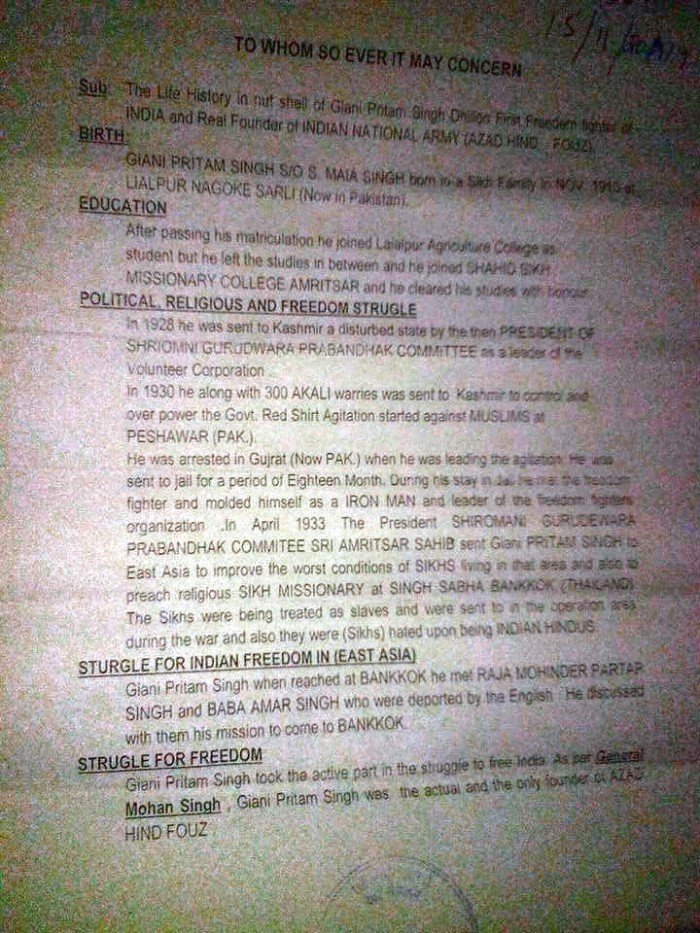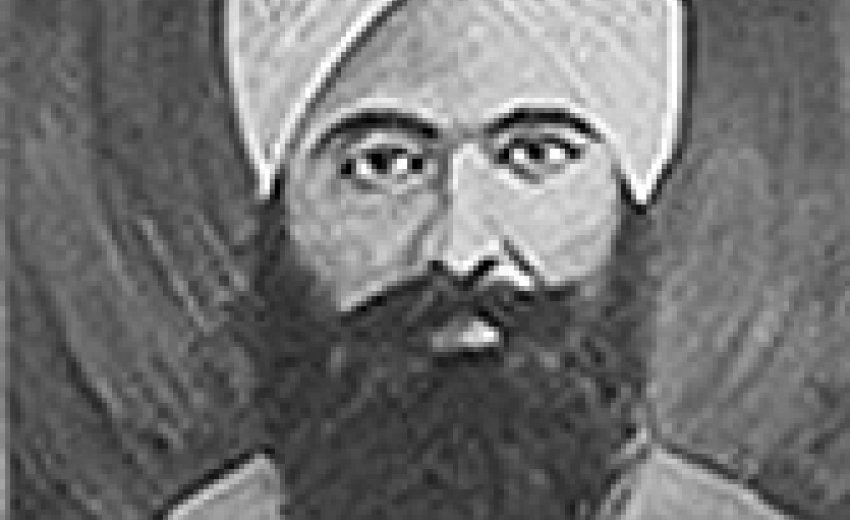The REAL founder of the Indian National Army [INA] - Giani Pritam Singh Ji Dhillon
--------
NOT Capt. Mohan Singh
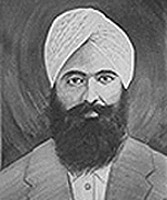 Over the years since 1945, there has been an on going controversy about the founding father of the Indian National Army. In the Court Marshall cases that took place against some of the officers, in New Delhi, in 1945/6 there was one notable name missing. For he was a civilian, who was the real brains behind the idea of the Azad Hind Fauj, a Giani Pritam Singh Dhillon.
Over the years since 1945, there has been an on going controversy about the founding father of the Indian National Army. In the Court Marshall cases that took place against some of the officers, in New Delhi, in 1945/6 there was one notable name missing. For he was a civilian, who was the real brains behind the idea of the Azad Hind Fauj, a Giani Pritam Singh Dhillon.
He has been mentioned in the early books published about the INA-both in Punjabi and English. But over the years, thanks to a few vested interests, his name has almost disappeared. Even today, Sikh writers miss the point and continue to erroneously claim that Capt. Mohan Singh is the "founder". Sadly, this just proves the shallow understanding and knowledge of these "writers" and their "research"
Although, I had read his name here and there, it was only in 2005, I first came across a very detailed account about Giani Pritam Singh , in a old book published in Punjabi by Vidhata Singh Tir, in 1949, where a whole chapter was dedicated to the INA. I found this book with a family in Moga, when I visited my ancestral village. It clearly stated that the idea of INA originated from Giani Pritam Singh, who had met with an Intelligence officer of the Japanese Imperial Army and mooted the idea.
May I add, as a young child growing up in Kedah, I had heard the name Giani Pritam Singh and some other interesting stories from the old time residents in Kedah.
However, over the years in books and history, his name has almost, but been erased and only two names are repeatedly mentioned, Capt, [later General] Mohan Singh and Chandra Bose, a Bengali Indian freedom worker, who lived in Germany and became the head of the European Indian Freedom League based in Berlin. Prior to that Bose had been involved in the youth wing of Indian National Congress, and escaped to Germany from India in 1940 after his involvement with agitation against the British
Whether by an act of God or mere fate, in 2014, I was in Harmander Sahib, sitting late into the night, when a young lad came and sat next to me, bringing two hot of cups of tea, offered me one, which was a welcome gesture out on a chilly night, on the cold marble floor.
This chance meeting led us to conversation, when finding out I was from Malaysia, he got very excited and said, my baba ji Giani Pritam Singh was in Malaya during the Japani time. He was involved in the Azad Hind fauj, ji. That name stirred my memories and interest. We got chatting, and he turned out to be Giani Pritam Singh Ji's great grand nephew. That chance meeting revealed a lot of information, and curiosity on both sides. Most of the personal information and photos, I got from Lakhwinder Singh Dhillon, the young man. He has promised to get hold of the diaries, which now are said to be in a Amritsar, Press Office with a Ram Singh Majithia. He has promised to get them for me.
Giani Pritam Singh ji was born on the 18th of November, 1910 in village Nagoke Sarli, District Lyallpur, currently in Pakistan.
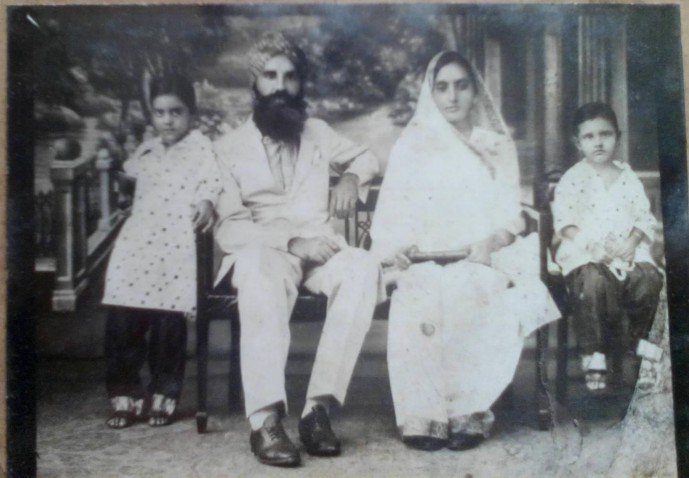
His father's name was Sardar Maya Singh, and mother was Mata Fateh Kaur. Pritam Singh, as was the culture then, got married quite young to Bibi Kartar Kaur. They had two children. One son, Prithipal Singh, and a daughter Gursharan Kaur.
He did his early studies in Lyallpur, and then passed out as Giani from Lahore. He then joined the Lyallpur Agricultural College, but left half way to join the Shahid Sikh Missionary College in Lahore to become a Sikh missionary. His wife passed away in 1938.
As missionary, and revolutionary his work led him to Bengal. While there he became actively involved with the Indian Independence Movement and Gadher Party. He was instrumental in the failed 1915 mutiny, that he stirred among a Bengal Lancers regiment. The authorities started hunting him. He fled via Burma to Bangkok, in 1919, where a number of Indian revolutionaries from other parts of India were living.
Once in Bangkok, he mingled with the local Sikh community and along with his missionary work began spreading the message of the Gadhar party.
Then he met with Major Fujiwara, head of the Japanese field intelligence section in the region, who had, even before the declaration of war by Japan, reached an agreement of collaboration with The Japanese at Bangkok on 4 December 1941 . It was Giani Pritam Singh's idea, working with Major Fujiwara, that captured Indian soldiers be asked to join an Indian national army to fight for Indian independence. These plans were started long before the war broke out, among a group of revolutionaries based in Bangkok. His wife passed away in 1938, while he was still in Bangkok
Thus, Capt. Mohan Singh is NOT the founder of INA, but was ONLY the FIRST operational Commander of the INA, accepted the position on Giani Ji and Major Fujimura's insistence.
The brains behind INA were Major Iwaichi Fujimura and a Giani Pritam Singh Dhillon.
In 1941, Capt Mohan Singh of the 14th Punjab regiment was stationed at the Thai border, in operation Matador, when the Japanese attacked. The 14th Punjab retreated along with the rest of the Allied Forces. Capt Mohan found himself in the jungles of Jitra, as a straggler. There they made an approach through locals to surrender to the Japanese, after they found some leaflets in Punjabi were dropped by the Japanese calling upon British Indian soldiers to surrender, and join the INA to fight the cause of Indian Independence.
At Jitra, Kedah, they were met by Giani Pritam Singh and Major Iwaichi Fujimura in a car that carried an Indian tri-flag along with a Japanese flag. They persuaded Capt Mohan to join the cause of INA. He was one of the most Senior Indian officers in the British indian Army. He agreed to take the operational command. He did NOT find the INA.
Next day, they gathered at Alor Star Gurduara, where the first ardas for the success of the INA and Indian Independence was done. Thus, a very strong element of little known history is attached to Alor Star Gurduara Sahib, that has not been realised nor commemorated or acknowledged by the local community, that a great event took place within it’s grounds.
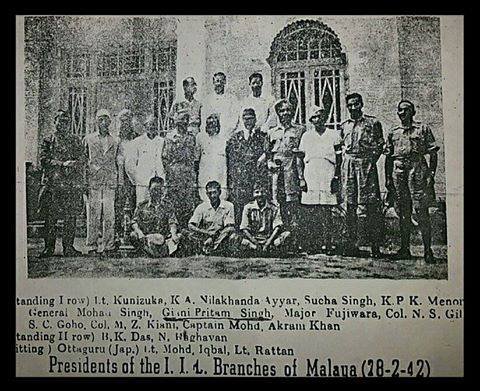
I attach some historical photos of Giani Pritam Singh and other INA leaders, along with Major Fujimura, attending an all Malaya INA conference in Kuala Lumpur in 1943
The irony is, later an almost nobody from Europe, who worked with German based Indian freedom movement, Chandra Bose stole the show from Mohan Singh, who then went on to steal the role of Giani Pritam Singh, and kept Giani Pritam Singh’s personal diaries, which came into his possession after Giani Ji died in an air crash in Tokyo. Giani JI along with 6 other INA officials had flown from Saigon after a conference to Tokyo, where he died in an air crash accident at the airport, on 24 March 1942
The two children were shipped off to India from Singapore by another INA officer Colonel Niranjan Singh. Giani ji's role was played down as Capt Mohan Singh took the diary records and did not divulge to the world. Giani Ji's family was not able to voice the truth.
Like Capt Mohan Singh usurped the role of Giani PRITAM SINGH, the same happened to Capt Mohan Singh, as Chandra Bose, usurped the credit for INA.
As mentioned, writers with shallow knowledge have not pursued the story of Giani Pritam Singh, THE REAL FOUNDER of INA-Giani Pritam Singh Dhillon. Mohan was NOT the founder, just as Chandra Bose, as claimed in recent article derived from wikipaedia.
Kuala Lumpur fell on 11 January 1942 with 3,500 Indian prisoners of war and Singapore on 15 February 1942 with 85,000 troops of whom 45,000 were Indians. Giani Pritam Singh asked for volunteers who would form the Azad Hind Fauj to fight for freeing India from the British yoke, under Capt Mohan Singh's command. A large number, again mostly Sikhs, came forward. Mohan Singh established his headquarters at Neeson in Singapore with Lt Col. Niranjan Singh Gill as Chief of Staff, LtCol. J. K. Bhonsle as Adjutant and Quarter master General and Lt. Col. A. C. Chatterjee as Director of Medical Services. The Azad Hind Fauj, however, was formally established on 1st September 1942 by which date 40,000 prisoners of war had signed a pledge to join it.
Another notable Sikh name was Colonel Gurbaksh Singh Dhillon.
It is claimed by most current writers that Giani Pritam Singh and Chandra Bose were "friends" is untrue. Records clearly show Giani Ji left India in 1919 and passed away in March 1942, in Tokyo.
Chandra Bose was in India until 1940 and left for Europe. He arrived in Malaya in 1943, after Giani Ji's demise. They may have heard about each other, but they were not friends.
As I get hold of these Giani Ji's diaries in near future, we will learn the TRUTH of history, not the "truth" made up by copycat writers.
